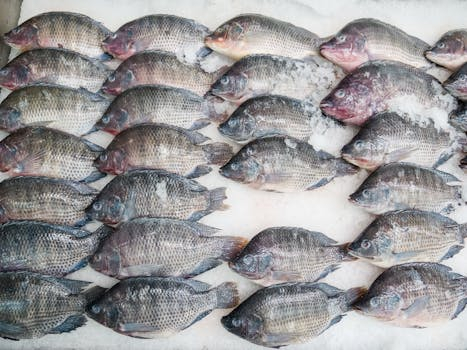Sustainable Seafood: How to Choose the Best Options
When it comes to seafood, many of us are guilty of just grabbing whatever is available at our local grocery store or restaurant without thinking about where it came from or how it was sourced. But with the increasing concern for the health of our oceans and marine life, it’s important to start paying more attention to where our seafood comes from and how it was caught. This is where sustainable seafood comes in – it’s not only better for the environment, but also for our own health. In this article, we’ll explore what sustainable seafood is, why it’s important, and how you can make the best choices when it comes to consuming seafood.
What is Sustainable Seafood?
Sustainable seafood refers to fish and shellfish that are caught or farmed in a way that is environmentally responsible and has a minimal impact on the marine ecosystem. This means that the method of catching or farming does not contribute to overfishing, habitat destruction, or pollution of the ocean.
With over 90% of the world’s fish stocks fully or overexploited, unsustainable fishing practices are one of the biggest threats to our oceans and marine life. Sustainable seafood aims to protect and preserve marine life for the long-term, while also ensuring that our oceans can continue to provide seafood as a food source in the future.
The Importance of Choosing Sustainable Seafood
Choosing sustainable seafood is not only beneficial for the environment, but also for our own health. Here are some reasons why it’s important to choose sustainable seafood:
1. Protects Marine Ecosystems
Unsustainable fishing practices can cause harm to marine life, resulting in a decline in fish populations and damage to ocean habitats. By choosing sustainable seafood, you are helping to protect the diverse and delicate marine ecosystems.
2. Promotes Responsible Fishing and Farming Practices
Sustainable seafood supports responsible methods of fishing and farming that are less destructive and wasteful. This includes using more selective fishing gear, avoiding bycatch (the accidental capture of non-target species), and reducing the use of harmful chemicals and antibiotics in fish farming.
3. Better for Your Health
Sustainable seafood is typically fresher and caught or farmed in more natural, clean environments. This means that it is not only better for the environment, but also for your own health. It also tends to have a lower risk of contaminants such as mercury, making it a safer option to consume.
How to Choose Sustainable Seafood
Now that we know why choosing sustainable seafood is important, here are some tips on how to make the best choices:
1. Check for Certification
One of the easiest ways to make sure you are buying sustainable seafood is to look for labels and certifications. Some of the most well-known certifications include the Marine Stewardship Council (MSC) and the Aquaculture Stewardship Council (ASC). These labels guarantee that the seafood was caught or farmed in a sustainable and responsible way.
2. Know Where Your Seafood Comes From
Seafood that is caught or farmed locally tends to be more sustainable and better for the environment. This is because it has a lower carbon footprint and less time in transport, which means it is fresher and has a lower chance of being overfished. Try to buy seafood from local fishermen or farmers’ markets, and ask questions about where the seafood came from.
3. Choose Seasonal Seafood
Choosing seafood that is in season is not only more sustainable, but also tastier and more economical. When a certain type of seafood is in season, it means that it is abundant and can be caught in a sustainable way.
4. Educate Yourself
Know which types of seafood are considered sustainable and which are not. Some species, such as salmon and mussels, are generally sustainable options, while others, such as bluefin tuna and certain types of shrimp, should be avoided due to overfishing and destructive farming practices.









